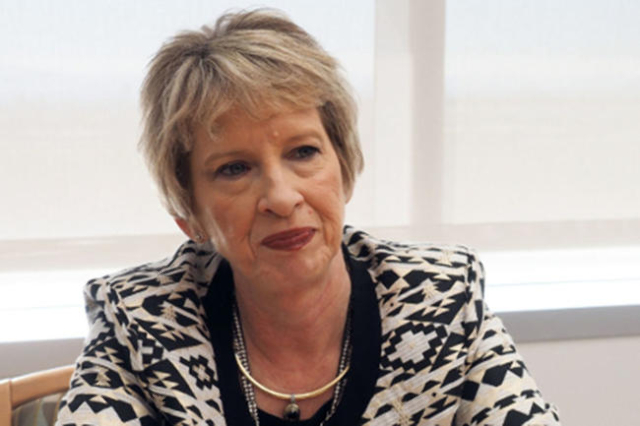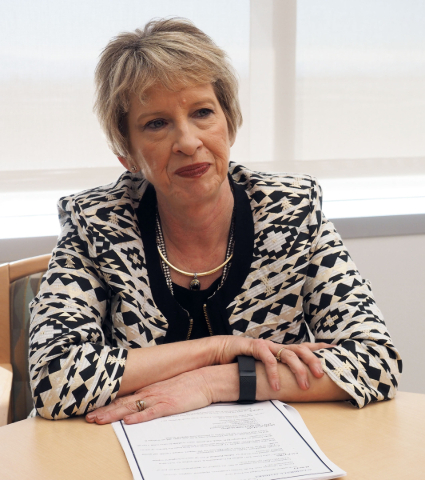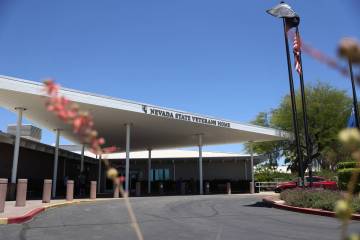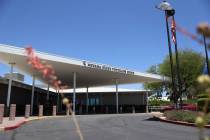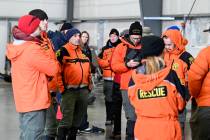Growth the big challenge for new VA Medical Center chief
Hailed by then-Veterans Affairs Secretary Eric Shinseki as the "crown jewel" of VA hospitals when it opened four years ago, the VA Medical Center in North Las Vegas has endured growing pains and criticism from veterans about wait times and staffing issues.
By the time the doors opened in August 2012, the patient load of 45,000 veterans was already on pace to surpass the projection of 55,000 by 2022. Coupled with shortages of doctors and specialists, the VA's first new hospital in 20 years that had been long overdue for Southern Nevada's growing veterans population was already in deep water.
It was not alone. Similar problems at VA facilities across the nation were rocked by scandals that forced Shinseki to resign in 2014. His replacement, Robert McDonald, a former West Point-trained Army officer, set out to put the VA on track to change its culture to better serve veterans.
Then came Peggy Kearns, a seasoned health care professional and longtime VA employee, to take over for Isabel Duff, who retired May 1 after a stormy period as director of the VA Southern Nevada Healthcare System.
"I love serving veterans," Kearns, a Purdue University graduate and clinical dietician, said Feb. 3 in her first interview since taking reins in late December.
She has served the VA for 32 years and, at 59, she earns more than $123,000 annually.
Her salary arguably is on par with the task ahead from streamlining pharmacies, to ensuring the emergency room makes best use of its 24 bays and eight, urgent-care beds.
She also must iron out kinks with the veterans "choice program" for accessing reimbursed care in the private sector.
Growth her biggest challenge
Her biggest challenge is coping with phenomenal growth of "6 to 7 percent again this year." That makes the Southern Nevada system the fastest growing in VA's western region and puts the patient load now at 57,000 already ahead of the original projections for 2022.
Her staff is focused on restoring trust in the scandal-rocked agency by giving veterans a voice in the system.
"We plan to add a veteran to each one of our various councils to help us as we make decisions on what we're going to do," said Kearns.
The mantra has been "we're building the airplane as it flies. Now it's time not to be building the airplane as it flies. It's time to put it on course," Kearns said.
After more than decade of planning and construction, the VA Medical Center and its system of new satellite clinics opened in 2012 with a price tag of $582 million for construction and an additional "activation" cost of $450 million to equip and staff it.
The price includes a recent $16 million emergency room expansion to increase beds from 12 to 24, and construction of a recently opened $38 million administration building and education center.
"We've got a hospital now. How do we make it the best hospital, the best health care system we can make it?" Kearns said. "I think we have really good people here that want to do that. It's now time to set that direction and move forward."
She commands a $516 million annual operating budget, with a staff of 2,400 including 850 who are non-clinical staff such as housekeepers and food-service personnel. And, she would have a hard time trying to make the medical center and the clinics fly steady without some 1,165 volunteers.
"It's wonderful to have volunteers," she said. "We have volunteers of all ages. In the summer we get quite a few teenagers. ... We have volunteers all the way up into their 80s and 90s."
Her goal is to attract more health care professionals to augment the 1,574 medical staff members. The staff consists of roughly 690 nurses or nursing professionals; 258 physicians and optometrists; 18 dentists and podiatrists plus 555 other health care personnel.
An education center that was built on the medical center's campus will help ease some of the staffing burden as it plays a role in hosting students from UNLV's new medical school. The idea is to develop an internship pipeline for graduate students and soon-to-be doctors who will stay on board.
The program is not starting up until 2017, "then medical school is three years. And then residency. So I'm no expert on this but I'm guessing five to seven years until you have a regular pipeline of people coming out," Kearns said.
Contact Keith Rogers at krogers@reviewjournal.com or 702-383-0308. Find him on Twitter: @KeithRogers2



